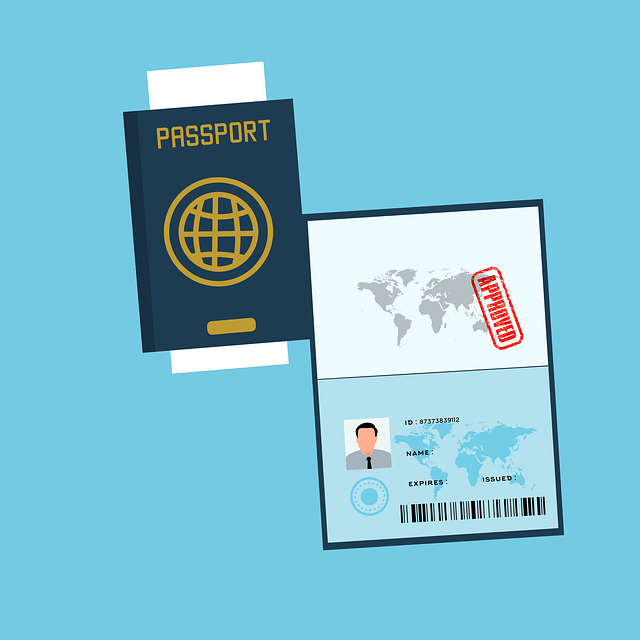Rigorous background checks for drivers' licenses and credentials are essential in today's digital age to ensure passenger safety in ride-sharing services and commercial transportation. These checks involve cross-referencing databases, advanced technology, and thorough investigations into criminal records and driving histories to identify risks. By implementing comprehensive passenger safety background checks, transportation companies can reduce hazards, establish industry standards, and ultimately safeguard passengers' well-being. Effective data cross-referencing, biometric identification, and license reciprocity programs enhance these checks, fostering trust and creating a safer environment for passengers.
In today’s world, ensuring passenger safety is paramount. Thorough verification of drivers’ licenses and credentials is not just a best practice; it’s an indispensable step in minimizing risks on our roads. This article delves into the multifaceted approach to achieving this, exploring key areas like understanding the importance of stringent checks, leveraging background passenger safety assessments, identifying red flags in licenses, and utilizing multi-source verification. We’ll also discuss effective data cross-referencing strategies and staying informed about license reciprocity programs, providing a comprehensive guide for enhancing transportation security.
- Understanding the Importance of Thorough Checks
- The Role of Background Passenger Safety Checks
- Uncovering Potential Red Flags in Licenses
- Verifying Credentials Across Multiple Sources
- Implementing Effective Data Cross-Referencing
- Staying Updated with License Reciprocity Programs
Understanding the Importance of Thorough Checks

In today’s digital era, where identity fraud and fake documentation are prevalent, thoroughly verifying drivers licenses and credentials is paramount for ensuring passenger safety in various sectors, from ride-sharing services to commercial transportation. Beyond meeting legal obligations, rigorous background checks are a game-changer in fostering trust and security among passengers, drivers, and companies alike.
Comprehensive checks that include cross-referencing official databases and using advanced technology can uncover false or manipulated documents, protecting both individuals and businesses from potential risks. Such meticulous processes not only safeguard passenger safety but also set industry standards, promoting a culture of integrity and accountability in the transportation sector.
The Role of Background Passenger Safety Checks

Background passenger safety checks play a pivotal role in verifying drivers’ licenses and credentials, ensuring the highest levels of safety on our roads. These rigorous checks go beyond simple document verification, delving into the applicant’s history to uncover any potential red flags. By conducting comprehensive background investigations, transportation companies can mitigate risks associated with hiring untested or unqualified drivers.
Passenger safety background checks involve scrutinizing criminal records, driving histories, and other relevant data points. This process helps identify individuals with a history of reckless driving, substance abuse issues, or even more severe offenses, which could pose significant dangers to passengers’ well-being. Such precautions are essential in the transportation industry, where the consequences of a driver’s actions can be devastating.
Uncovering Potential Red Flags in Licenses

When verifying drivers licenses and credentials, it’s crucial to look beyond mere appearances. Uncovering potential red flags requires a meticulous examination of various factors. One key aspect is comparing the license photo with the driver’s actual appearance. Discrepancies in age, features, or overall resemblance can indicate fraud. Additionally, checking for any recent suspensions, revocations, or significant violations on the driving record is essential for gauging passenger safety.
Background checks play a pivotal role here. Thorough screening of the driver’s history, including previous employments and addresses, can reveal inconsistency or red flags that might have been missed otherwise. These checks ensure that individuals operating vehicles have appropriate qualifications and haven’t engaged in activities posing potential risks to passengers.
Verifying Credentials Across Multiple Sources

In today’s digital era, verifying drivers licenses and credentials thoroughly is paramount for ensuring passenger safety. This process involves cross-referencing information across multiple sources to validate authenticity. Online databases and government portals play a crucial role in this verification by providing up-to-date records that can be accessed promptly. By integrating these digital tools into background checks, transportation companies can significantly enhance their due diligence.
Moreover, verifying credentials across multiple sources helps mitigate the risk of fraud or identity theft. It’s not enough to solely rely on a physical copy of a driver’s license; digital verification ensures that the information matches across different platforms, including state records and third-party background check services. This multifaceted approach contributes to a comprehensive passenger safety background check, ultimately fostering trust and security in the transportation industry.
Implementing Effective Data Cross-Referencing

Implementing effective data cross-referencing is a critical step in enhancing passenger safety through comprehensive background checks. This involves verifying the authenticity and validity of driver’s licenses and credentials by comparing them against multiple reliable databases. By integrating advanced technology, such as biometric identification systems and digital license verification platforms, transportation companies can access up-to-date information on drivers’ licensing status, driving history, and any potential red flags.
Cross-referencing data from various sources, including state licensing agencies, national databases, and third-party verification services, ensures a multi-layered approach to background checks. This method reduces the risk of human error and fraud, as it involves simultaneous validation of documents and records. Ultimately, rigorous data cross-referencing contributes to creating a safer environment for passengers by ensuring that only qualified and trustworthy individuals are behind the wheel.
Staying Updated with License Reciprocity Programs

Staying informed about license reciprocity programs is an integral part of ensuring comprehensive passenger safety background checks. These programs facilitate the recognition and acceptance of driver’s licenses issued in one state by other states, streamlining verification processes. By staying updated on such initiatives, transportation businesses can enhance efficiency during the screening process, making it faster and more convenient for both operators and passengers.
Reciprocity agreements allow for seamless transitions when drivers operate across state lines, ensuring that their credentials are validated without unnecessary delays. This is particularly crucial in the context of passenger safety, as it reduces potential loopholes or inconsistencies in background checks, promoting a safer overall travel experience.














